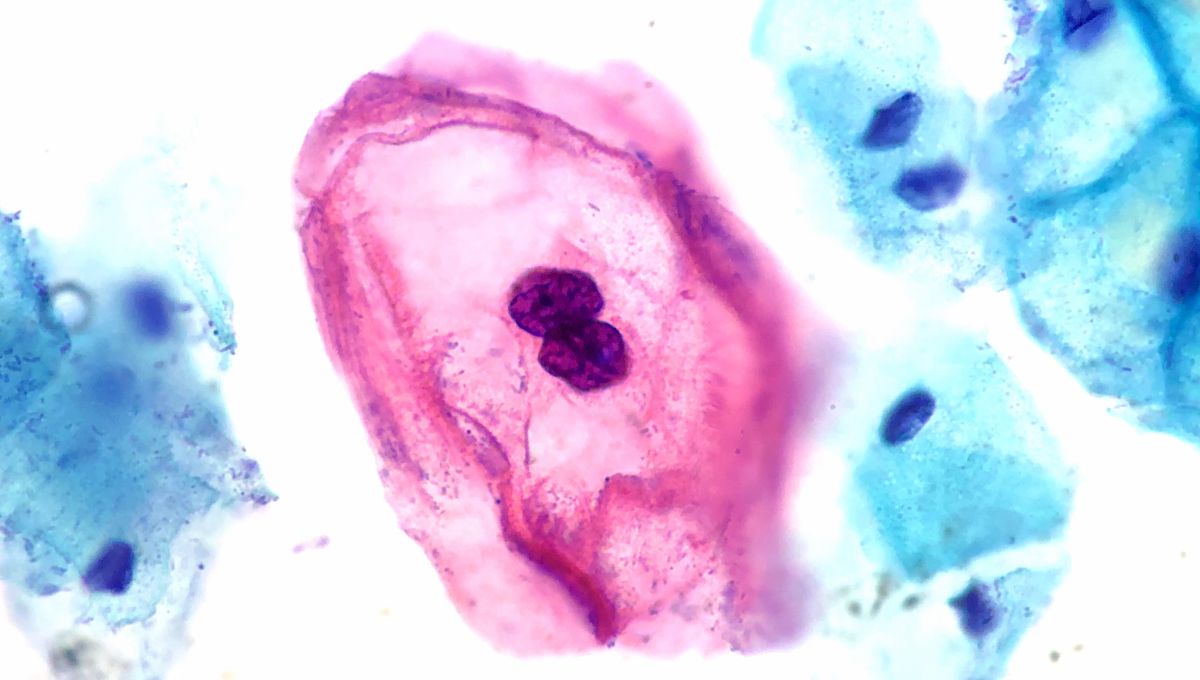
A survey of US adults has revealed efforts to boost vaccinations against preventable cancers may be aiming for the wrong target, which would certainly explain their limited post-pandemic success. When a sample of 22,344 people were asked if they were aware of the human papillomavirus (HPV), more than a third were not. Even among those who knew of it, many didn’t know of its link to cervical cancer, and even fewer had heard of its other dangers.
When a particular topic is a big part of your life, and that of colleagues and friends, it’s easy to forget how wide the gap in knowledge may be between your circles and the wider public. XKCD captured this beautifully, but it bears repeating.
HPV vaccines have prevented millions of cancers, and deaths in numbers epidemiologists are constantly updating, but have not reached their full potential because vaccination rates are too low. This is often attributed to scare campaigns by anti-vaccine advocates, bolstered by those with a specific hostility to preventing HPV. However, a new study indicates the problem may go deeper.
Participants in the Health Information National Trends Survey were asked “Have you ever heard of HPV?” and “Before today, have you ever heard of the cervical cancer vaccine or HPV shot?”. Those who replied yes to the first question were asked if HPV can cause cervical and oral cancer.
Nationwide, 34.3 percent of respondents said they either had not heard of HPV, or were unsure. Perhaps surprisingly, the number unaware of the vaccine was only a little higher, at 37.6 percent. The figures varied considerably by state. Awareness of the virus was highest in the northeast, with more than 80 percent of residents of Rhode Island and Vermont aware, although the authors of a study note that for smaller states the sample size was sometimes unreliably small. Meanwhile, in Kansas and Nebraska around half the population said they had never heard of HPV.
Intriguingly, while the pattern was broadly similar for knowledge of the vaccine, there were some curious exceptions. More people in North Dakota, for example, said they had heard of the vaccine than the virus it protects against, although again the sample size issue may apply.
These figures alone indicate the mountain health authorities have to climb to convince more people to be vaccinated, but that’s not the end of the story. Even among those who had heard of HPV, 28.3 percent did not know it can cause cervical cancer, and 70.8 percent were unaware of the link to oral cancer. The study did not investigate knowledge of the established links to four other cancers, but presumably the figures would have been even worse.
Combining these statistics, if the sample is representative, more than half of adult Americans don’t know the most publicized reason to get the HPV vaccine, and very few are aware of the additional benefits.
The study does not provide a breakdown by age or sex, so we don’t know if awareness is better among the demographic that would benefit from the vaccine the most.
On all fronts the survey shows awareness is lowest in the South and Midwest. “These findings are troubling because these regions have recently seen a marked rise in HPV-associated cancers,” the authors write.
Almost all cervical cancers are caused by HPV infections, most often by two strains which all versions of the HPV vaccine provide excellent protection against. As smoking rates have declined, HPV has also become the cause of more than half of the US’s oropharyngeal (throat) cancers.
“When people make decisions about whether they want to get vaccinated or whether they want to get their child vaccinated, they are doing a risk-versus-benefit assessment. So it’s important for them to understand what can happen when someone gets HPV infection,” Dr Kalyani Sonawane of the Medical University of South Carolina said in a statement.
Anti-vaccine campaigners, including Robert F Kennedy Jr., now secretary of Health and Human Services, have put a lot of energy into exaggerating the risk, through a combination of facts taken out of context and outright fabrications. Public health authorities and science communicators have devoted plenty of energy to rebutting these claims. However, without knowing why they should take the vaccine in the first place – if they even know it exists – it may not matter much whether someone has been misled on the alleged dangers.
“HPV is linked with six different types of cancers, but cervical cancer seems to be the one that people are most aware of,” Sonawane said. “It was first approved for girls and heavily marketed toward girls. Even the packaging was pink.”
Mass HPV vaccination campaigns started in 2006. Cervical cancer most often occurs in the 30s and 40s, so those that were part of the original program are reaching what was once the prime risk age. The good news is that cervical cancer rates among this group are drastically lower than for previous generations, proving the vaccine’s success.
Cancers of the mouth and throat, on the other hand, peak after 50. Consequently, the effectiveness of the vaccine for these cancers is still unconfirmed. However, given the same strains are responsible, and that even before cervical cancer rates started dropping the genital warts the vaccine protects against also became rare, scientists are confident the benefits will be seen there as well.
Although cervical cancer is the most common HPV-linked disease, the vaccines are now approved for boys as well. However, vaccination rates have never caught up. The lower awareness of the link to other cancers reflects what pediatricians have reported anecdotally. “People think, ‘Oh, cervical cancer. I don’t need to get my boys vaccinated,’” Sonawane said.
The study is published in JAMA Oncology.
Source Link: A Third Of Americans Are Unaware Of HPV; No Wonder Vaccination Rates Are Dangerously Low